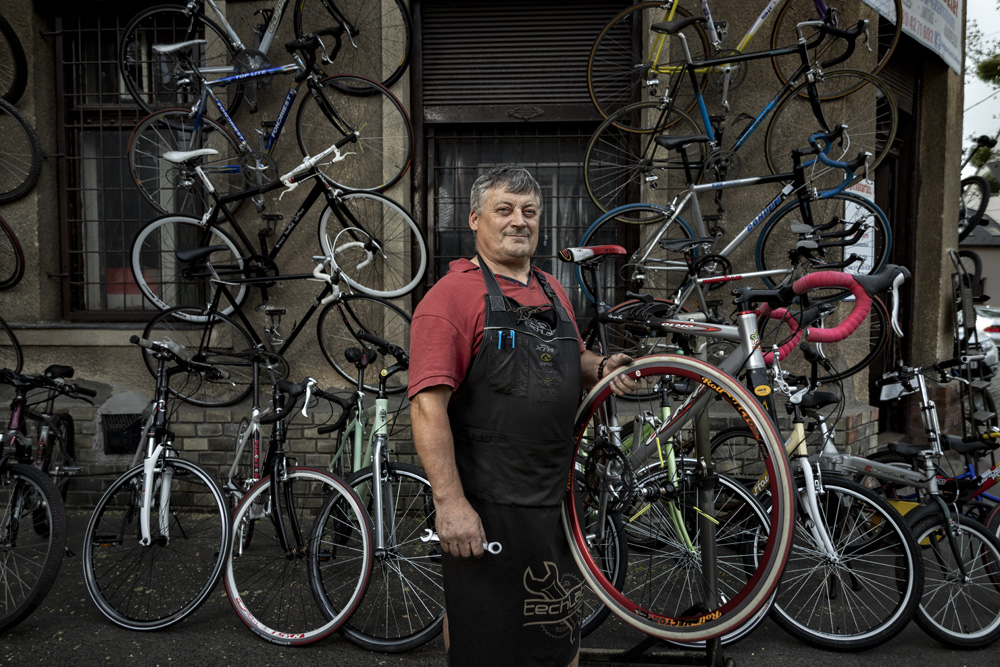The working-class district of Újpest is celebrating its 180th birthday, having separated from Rákospalota to become independent in 1840. To mark the occasion, the council has decided to showcase its local craftsmen, portrayed by acclaimed photographer Miklós Déri.
People in Újpest, ‘New Pest’, Budapest District IV, are proud of their roots. Everyone who grows up here always feels újpesti. It’s a small town in a big city – one that retained its seclusion even after it was officially annexed to the capital in 1950. Újpest has always been characterised by industry, and while there are fewer and fewer plants left, its craftsmen have kept operating in their own workspaces, making it a unique, district macro-community.
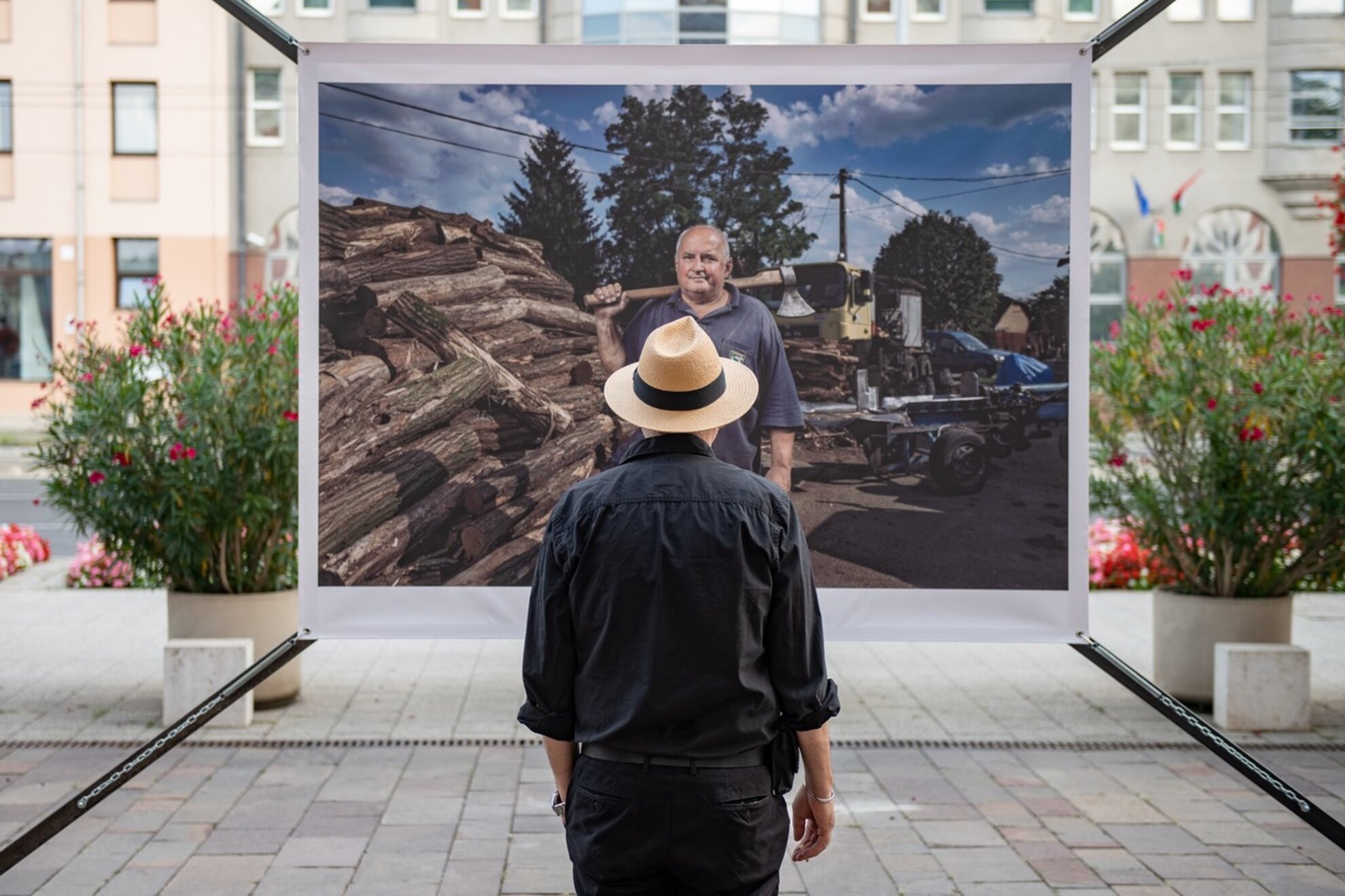
They are now the subject of a special anniversary exhibition, presenting their work and surroundings. This open-air display now sits outside Újpest Town Hall by Újpest-központ metro. Photographer Miklós Déri, whose work has been featured several times by We Love Budapest, was commissioned to take the portraits.
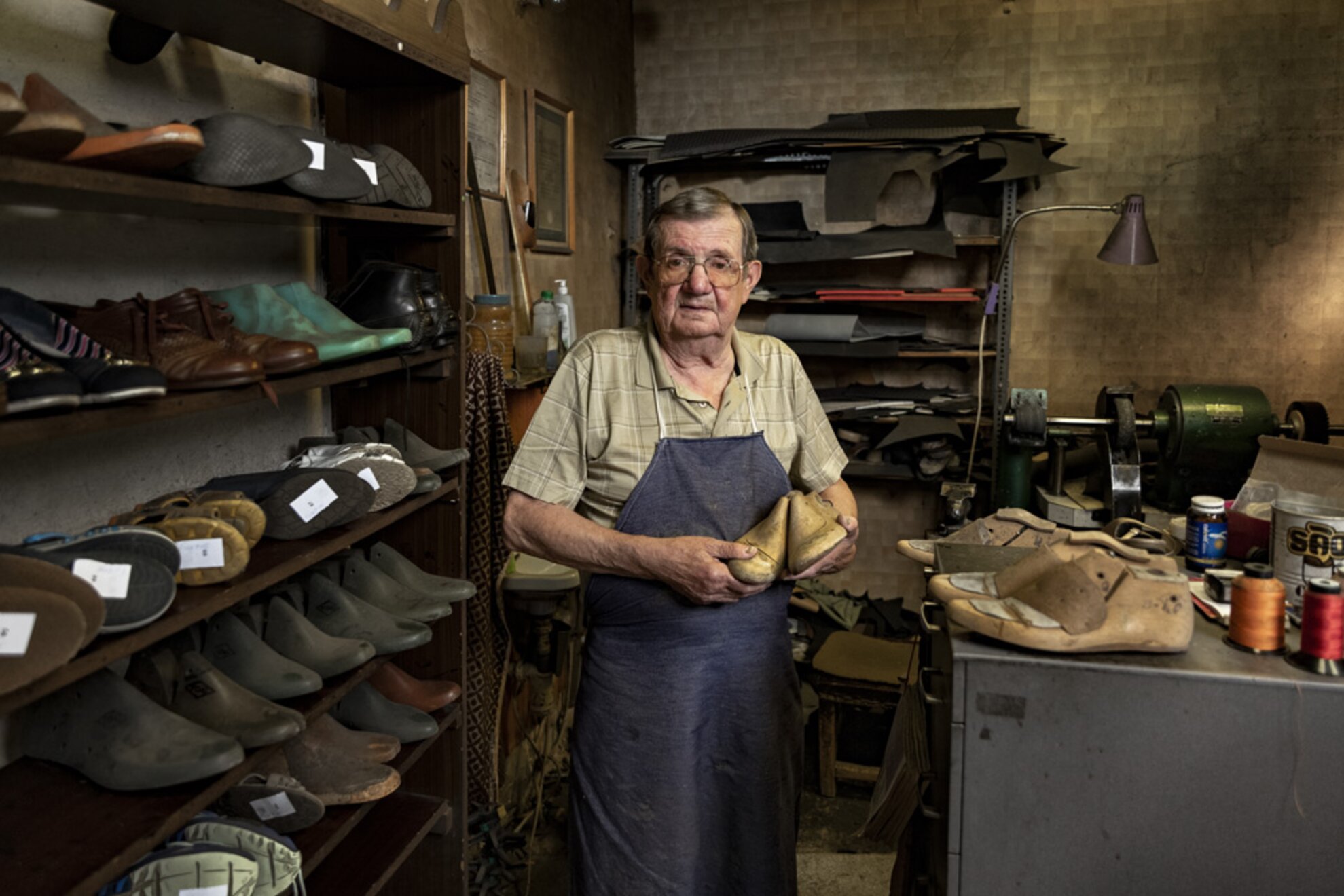
He has worked on similar projects before, such as showcasing the vendors and service providers around Rákóczi tér in equally gritty District VIII. He is particularly interested in gentrification and the process by which the old and new generations of entrepreneurs mix, helping each other and co-occupying the spaces of the city.
Community building
“I didn’t know Újpest before, I just passed through it,” says the photographer. “I was surprised at how many small businesses operate, especially around Újpest-központ. It was interesting that these modest masters form a very strong community, watching, knowing each other.”
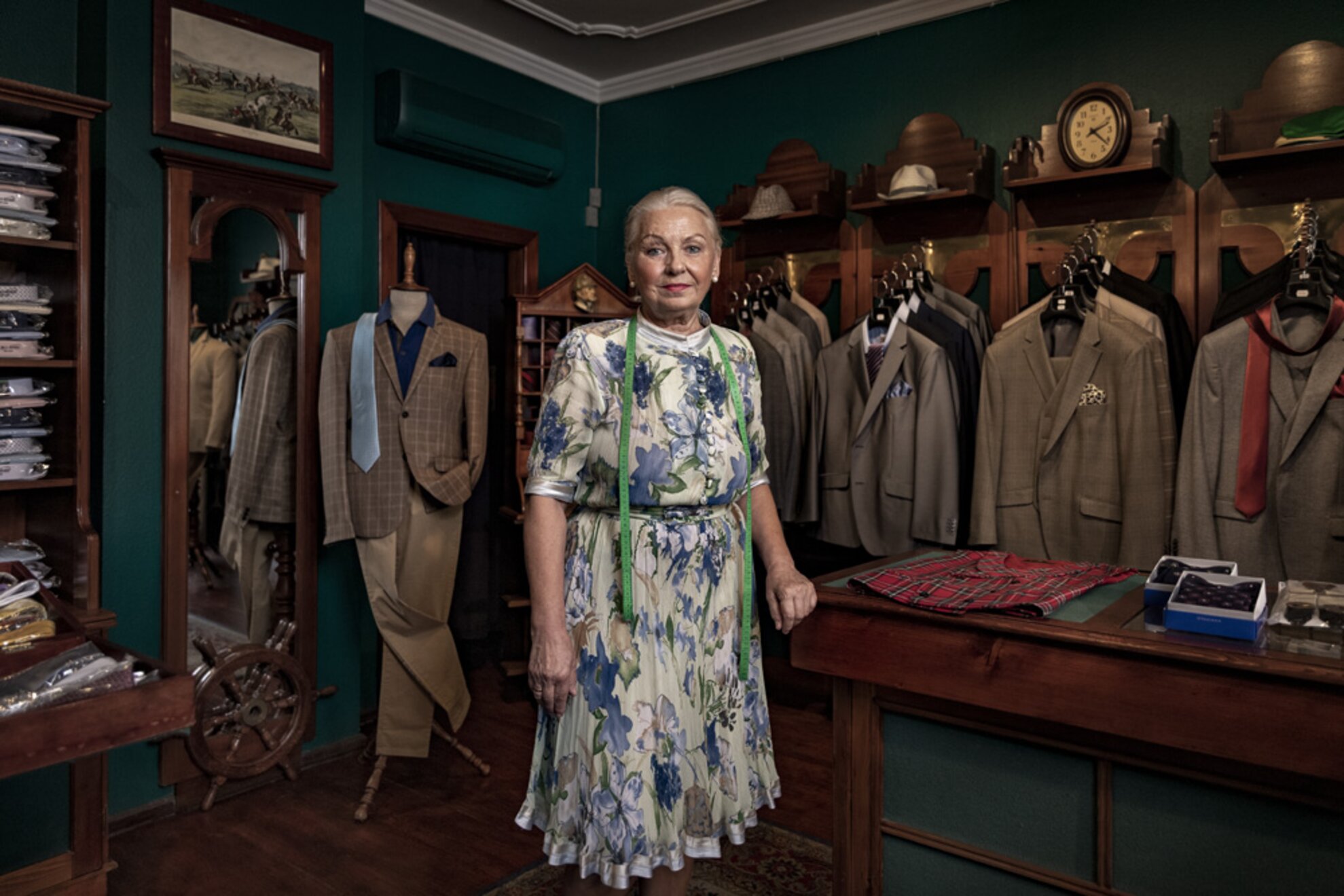
The photographer captured 15 Újpest craftsmen and small entrepreneurs in their typical daily environment, where they had been working for decades. As he told WLB, this kind of photography was in vogue in the middle of the last century, when images of a proud butcher holding a half-pig in his hand were taken, for example.
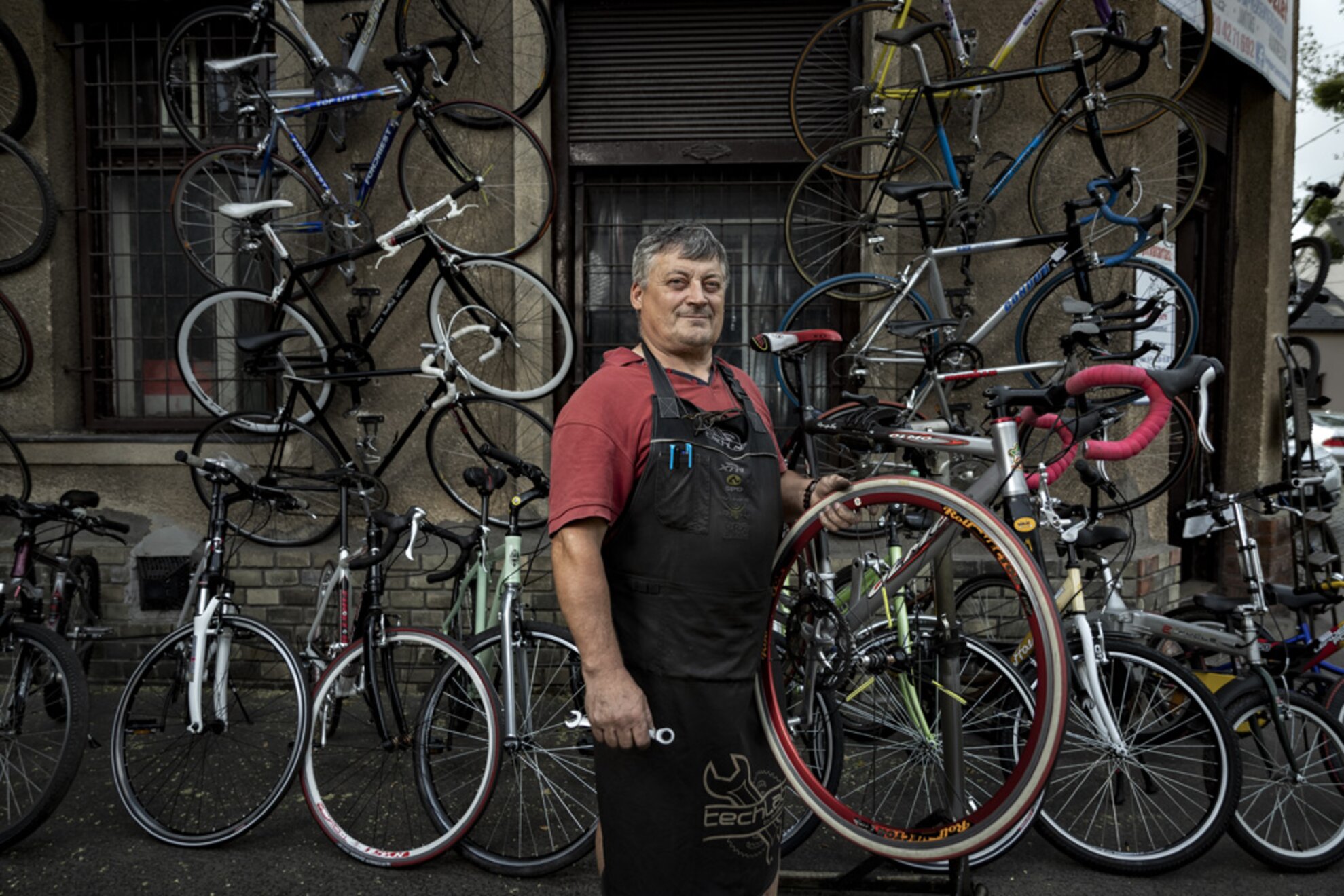
The most difficult task was to find the subjects of the photos, but the council helped him with this, tracking down an old shoemaker, a wafer and Neapolitan manufacturer, a watchmaker, a photographer, confectionery and upholstery dynasties, a salon manager where suits are made, traditional wine bar and restaurant workers.
A printer who works on a small number of publications in his tiny family house. A ‘fire-maker’ who sells fuel and wood to the residents who still heat in Újpest with a stove. He snapped the director of the Butterfly Museum, who preserves and presents numerous beetle and insect populations unique in Central Europe.
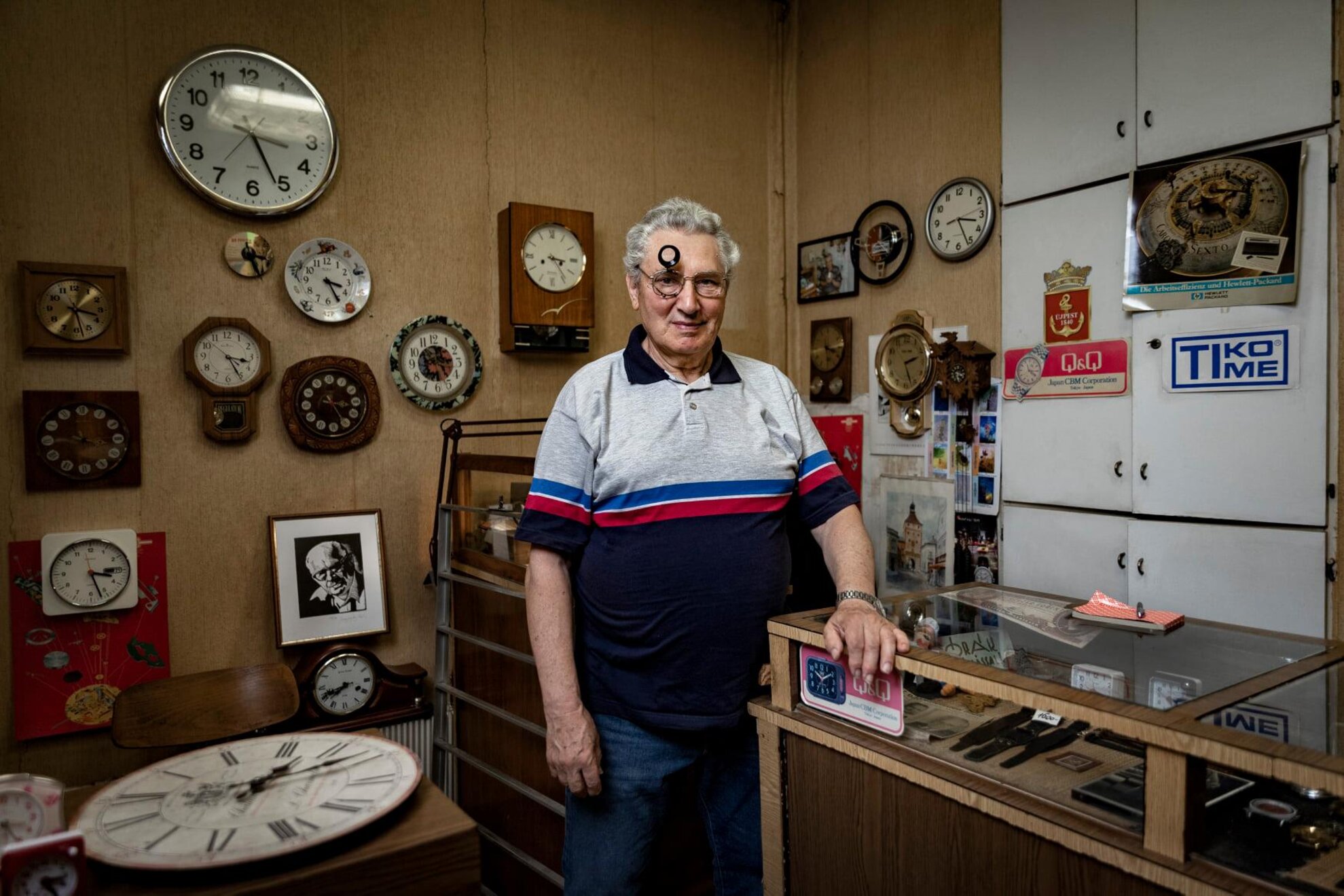
Although with the rise of large-scale industry you would think these small professions are on the verge of extinction, the bicycle repair guy and motorcycle mechanic have recently received more commissions than ever before. So some craft professions are on the rise but it is also true that, for example, the shoemaker and old watch repairer have to face the challenges of mass production.
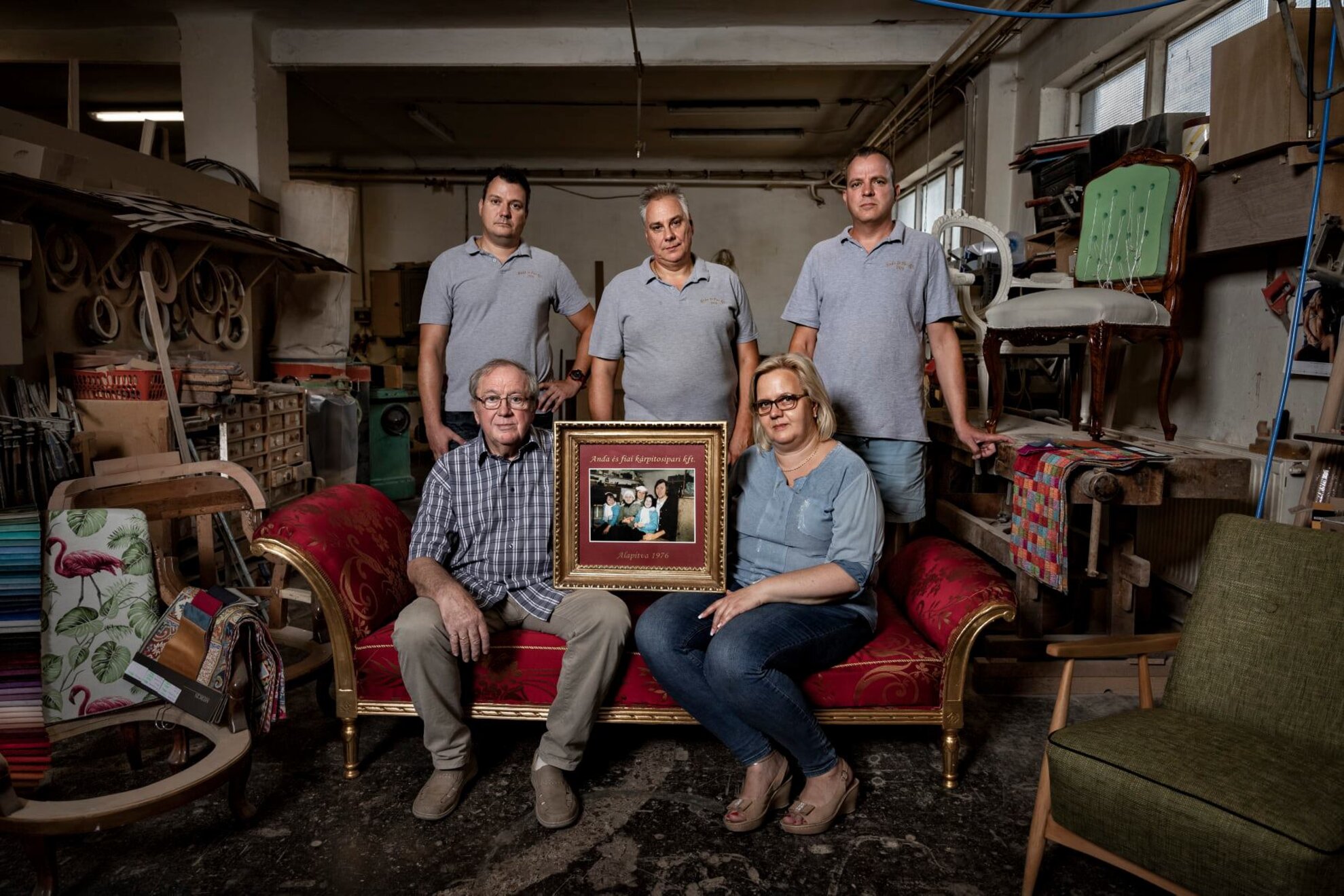
According to Miklós, they have been in this industry for so long that they could no longer change professions. In any case, every small business is a survivor, looking back on a history of at least 20-30 years – even the craftsman’s grandfather may have been in the industry. The upholsterers in the photo, for example, hold up another that shows the family business just starting up.
Caring for craftsmen
“When we talked about which other craftsmen I was visiting, they knew right away who it was, who had moved, who had died, who had taken over this or that place,” says Miklós. “One of the old guys – I wouldn’t say which – said in a hesitant voice how good it felt for him to be thought about, that they were being noticed as people who created something, that he wasn’t just some fix-it-up chappie always being brought in damaged goods.”
